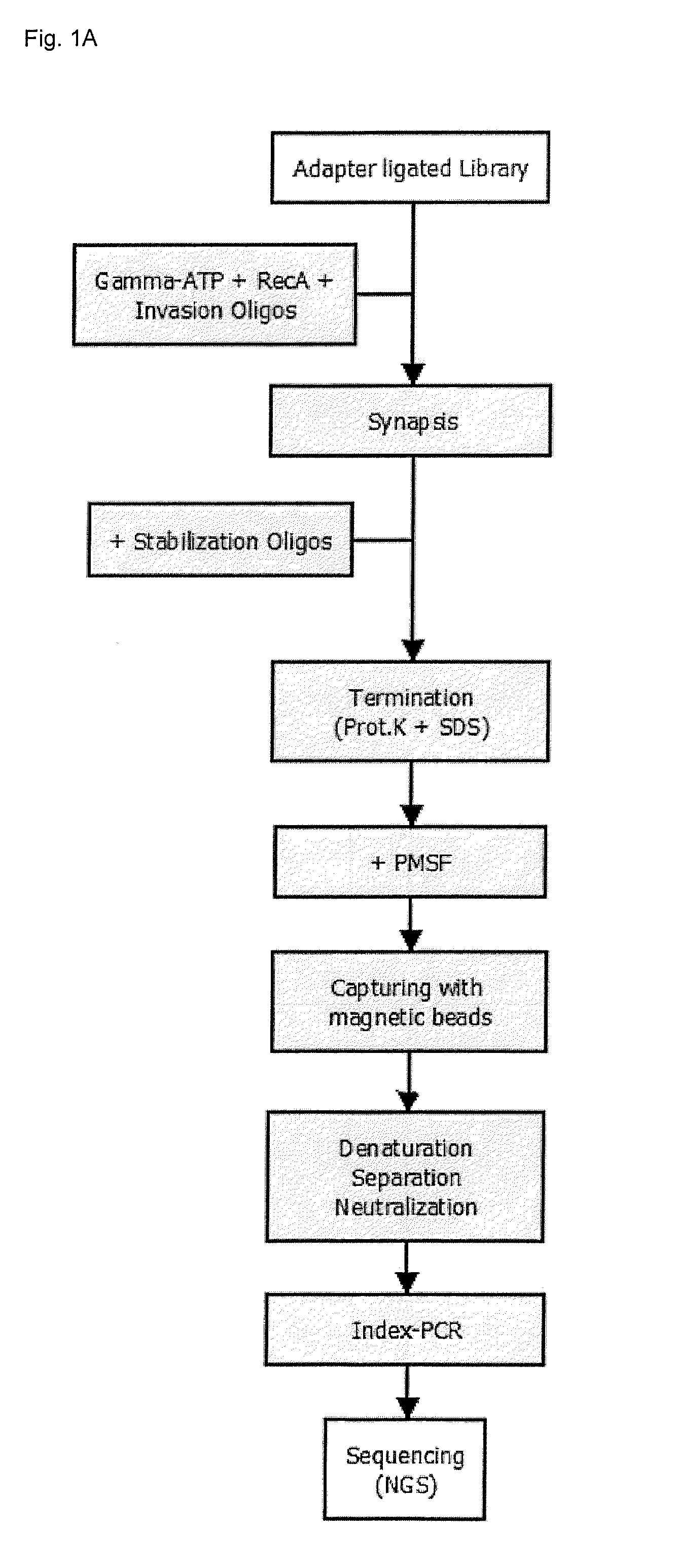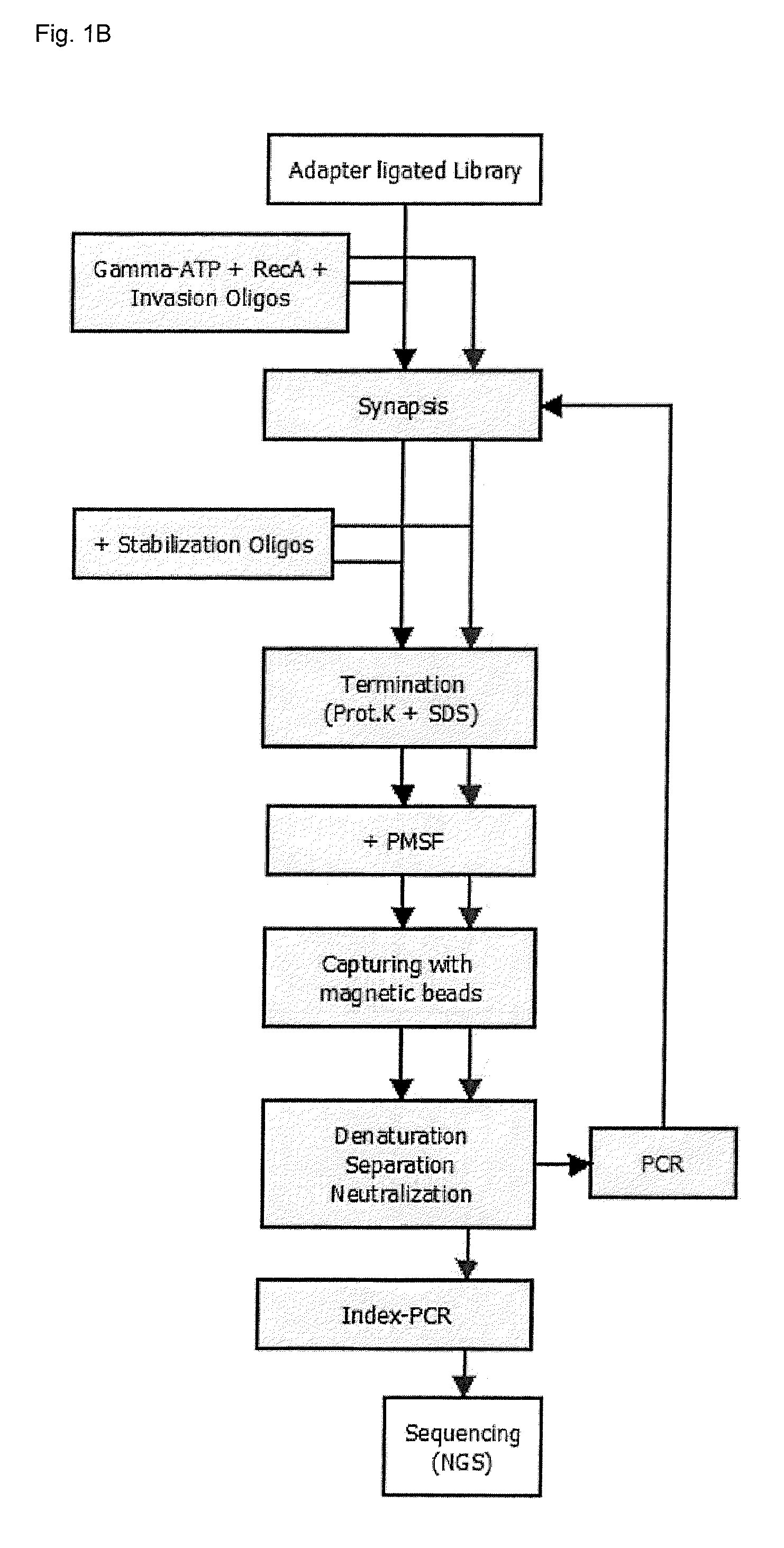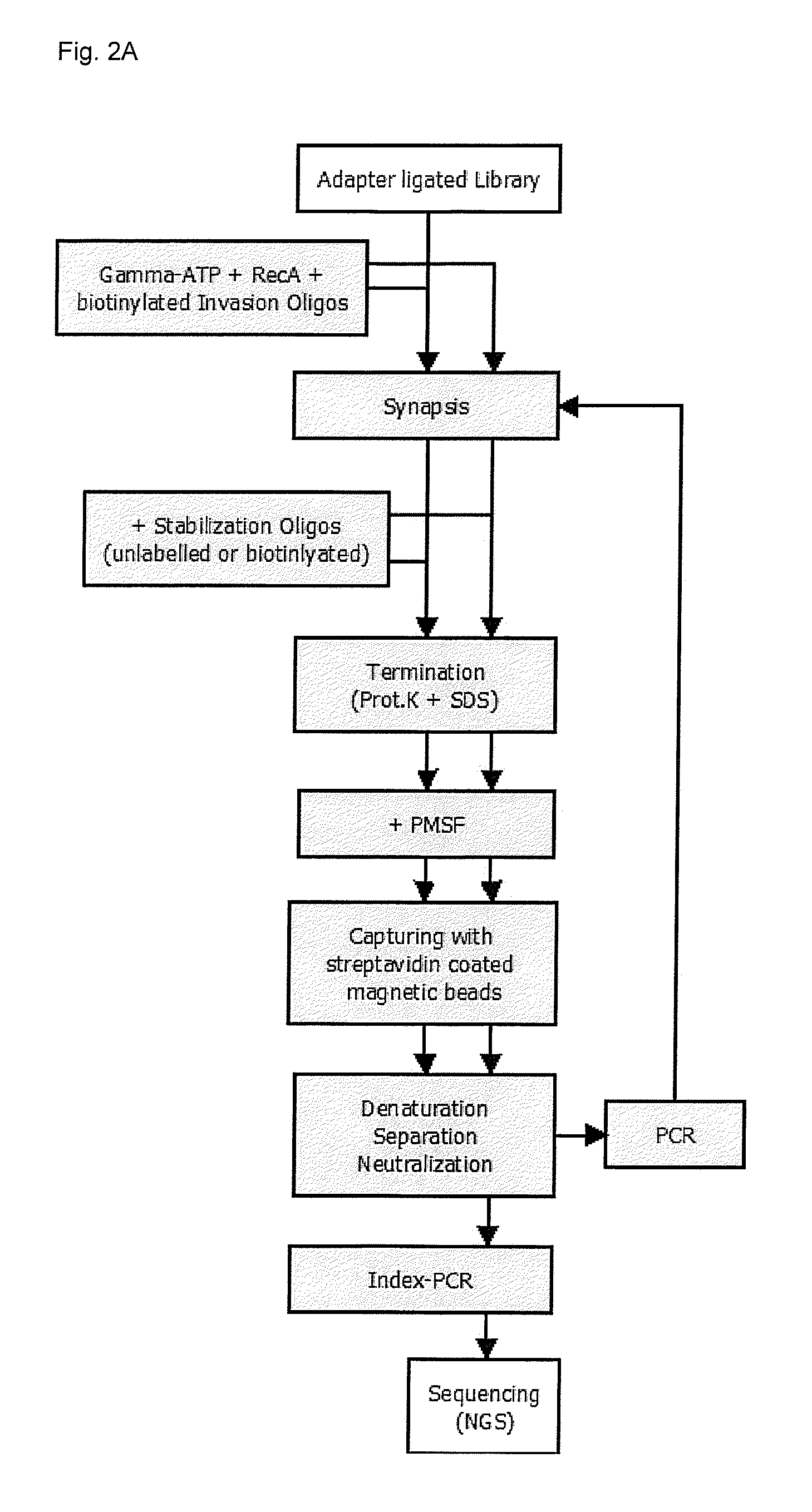Recombinase mediated targeted DNA enrichment for next generation sequencing
a recombinase and dna technology, applied in the field of targeted enrichment of nucleic acids, can solve the problems of long incubation time, high cost of whole genome sequencing, and many platforms that cannot sequence complex genomes in a single run cost-efficiently, and achieve the effect of quick and simple operation
- Summary
- Abstract
- Description
- Claims
- Application Information
AI Technical Summary
Benefits of technology
Problems solved by technology
Method used
Image
Examples
example 1
Library Construction
[0173]Multiple protocols for the preparation of adaptor-ligated genomic DNA libraries are known in prior art. In the following example the library preparation protocol of Illumina, Inc. was used:[0174]1) 3 μg human genomic DNA was diluted in 130 μl TE and fragmented with the ultrasound device Covaris S220 using following parameters: duty cycle 10%, peak incident power 175 W, cycles per burst 200, time 180 sec, temperature of the water bath 7° C., and power mode frequency sweeping.[0175]2) Sheared DNA was concentrated with 180 μl AMPure XP beads (Beckman Coulter). After mixing and 5 min incubation at room temperature the magnetic AMPure XP beads were separated and the supernatant was discarded. After two wash steps with 500 μl 70% ethanol the beads were air dried for 5 min at 37° C. and DNA was eluted with 50 μl ddH2O.[0176]3) DNA end repair was carried out by adding 10 μl end repair buffer, 1.6 μl dNTPs, 1 μl T4 DNA polymerase, 2 μl Klenow DNA polymerase, 2.2 μl ...
example 2
[0191]Enrichment experiments were carried out in two different ways (FIG. 1):[0192]Example 2.1: target enrichment using invasion probes and stabilization oligonucleotides[0193]Example 2.2: repeated target enrichment using invasion probes and stabilization oligonucleotides (two enrichment cycles)
[0194]Due to the similarity of the individual steps in both examples (compare FIG. 1), only the procedure for example 2.2. will be described in detail.
[0195]RecA-coated nucleofilaments were prepared by adding 1 μl 20 μM biotinylated invasion probes (see subsequent Table 1), 2.5 μl 10×RecA buffer, 2 μg RecA, 5 μl 110 mM ATPyS to a 20 μl final reaction volume. After incubation for 10 min at 37° C., the obtained nucleoprotein filaments (wherein each filament comprises an invasion probe coated with RecA) were added to 4 μl gDNA library containing 500 ng DNA. The mixture was incubated for 10 min at 37° C. to form the synaptic complex (triple-stranded D-loop) before adding 1 μl 36....
example 3
Sequencing Results
[0198]After sequencing approximately 95% to 97% of the readings were mapped with SMALT (http: / / www.sanger.ac.uk / resources / software / smalt / ) to the human reference genome (hg19) and subsequently analyzed in more detail with the “Hybrid Selection Metrics” software of the Picard tools (http: / / picard.sourceforqe.net). The genomic coordinates of invasion probes were defined as region of design (ROD) or bait region, consisting of 27 oligonucleotides with total size of 783 bp. For definition of the target region of interest (ROI) the region of design was expanded 200 bp upstream and 200 bp downstream from the bait coordinates resulting in a total size of 11490 bp. In particular with the method according to example 2.2, wherein two enrichment cycles were performed, targeted DNA enrichment with 10000-fold to 20000-fold for the region of design were achieved. Furthermore, a good coverage of the target region of interest were achieved with single base resolutions above 20×. Th...
PUM
| Property | Measurement | Unit |
|---|---|---|
| Fraction | aaaaa | aaaaa |
| Fraction | aaaaa | aaaaa |
| Fraction | aaaaa | aaaaa |
Abstract
Description
Claims
Application Information
 Login to View More
Login to View More - R&D
- Intellectual Property
- Life Sciences
- Materials
- Tech Scout
- Unparalleled Data Quality
- Higher Quality Content
- 60% Fewer Hallucinations
Browse by: Latest US Patents, China's latest patents, Technical Efficacy Thesaurus, Application Domain, Technology Topic, Popular Technical Reports.
© 2025 PatSnap. All rights reserved.Legal|Privacy policy|Modern Slavery Act Transparency Statement|Sitemap|About US| Contact US: help@patsnap.com



